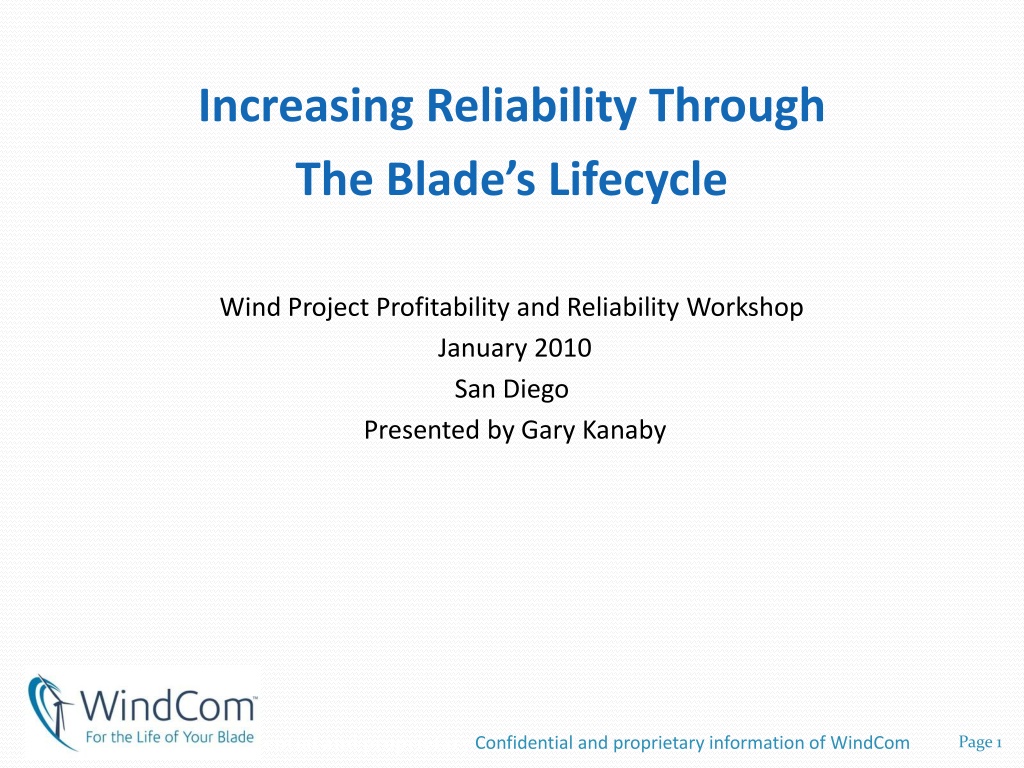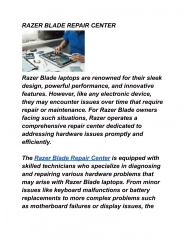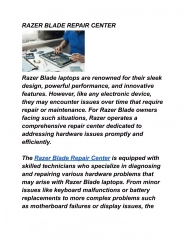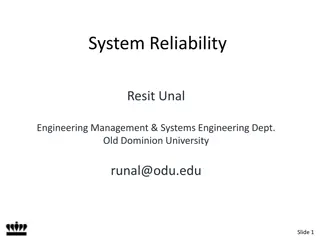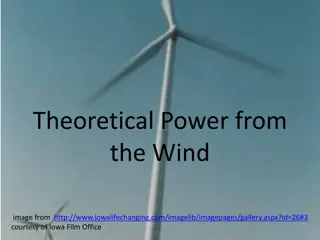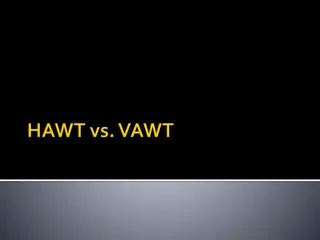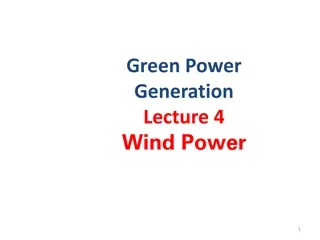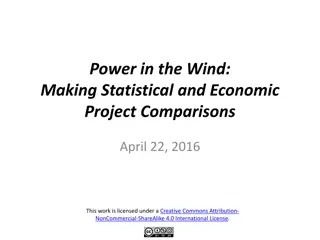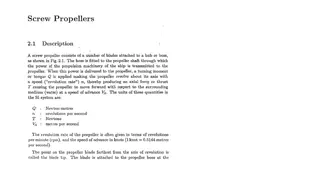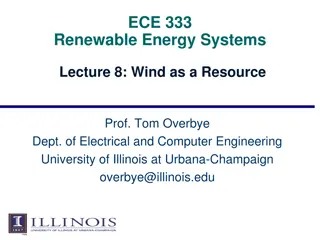Enhancing Wind Blade Reliability: Strategies for Improved Lifecycle Performance
Reliability plays a crucial role throughout the lifecycle of wind turbine blades. This workshop presentation by Gary Kanaby delves into the various stages from design to decommissioning, emphasizing the importance of proper maintenance and involvement of owner/operators. It provides insights on preemptive actions, quality control measures, and best practices for ensuring optimal blade performance and profitability in wind projects.
Download Presentation

Please find below an Image/Link to download the presentation.
The content on the website is provided AS IS for your information and personal use only. It may not be sold, licensed, or shared on other websites without obtaining consent from the author. Download presentation by click this link. If you encounter any issues during the download, it is possible that the publisher has removed the file from their server.
E N D
Presentation Transcript
Increasing Reliability Through The Blade s Lifecycle Wind Project Profitability and Reliability Workshop January 2010 San Diego Presented by Gary Kanaby Confidential and proprietary Confidential and proprietary information of WindCom Page 1
Overview Reliability can be affected throughout a blade s lifecycle. Blade must be designed right, built right, installed right and maintained properly. An owner/operator must be involved in the blades from their birth to decommissioning. Confidential and proprietary Confidential and proprietary information of WindCom Page 2
Get Involved Upfront Ask Questions What condition monitoring is available? Is there a Lightning protection system? Where are your blades coming from? Are IEC standards met? Source: LM Glasfiber What Certifications do you have? Hire an ISP as a representative to visit factory Review production process and quality system Learn inspection processes Get familiar with the blade structure Confidential and proprietary Confidential and proprietary information of WindCom Page 3
Get Blade Right Before Installation Inspection at off-loading sites Repairs initiated and documented Documentation starts here If remediation required, get an ISP to review and plan. Confidential and proprietary Confidential and proprietary information of WindCom Page 4
Last Chance Second inspection before flying rotor Blade damage Correct Pitch Correct tension Blade database Confidential and proprietary Confidential and proprietary information of WindCom Page 5
During Warranty Know maintenance schedule Bolt tensioning Inspection Look & listen Special attention after storms Contact OEM immediately with issue Document services provided End of Warranty Inspection Confidential and proprietary Confidential and proprietary information of WindCom Page 6
Inspect at End of Warranty Verify condition at end of warranty with ISP Damage report is prepared Warranty repairs are completed before hand off Non-warranty repairs can also be completed at the time of inspection Confidential and proprietary Confidential and proprietary information of WindCom Page 7
Lost Revenue Reduced energy as result of poor aerodynamics & pitch errors Blade vibrations damage gearbox Reduced energy for shut down during icing & high winds Lost revenue due to turbine non-operation while waiting for repairs to be completed Access to the blade using crane/lift Actual cost of the needed repair Confidential and proprietary Confidential and proprietary information of WindCom Page 8
Benefits of Scheduled Maintenance Increased availability. Reduced crane/mobilization cost. Reduce/eliminate large repairs and replacements. Increased aerodynamic efficiency. Leading edge erosion Correct Pitch Angle Confidential and proprietary Confidential and proprietary information of WindCom Page 9
Blade Monitoring is Essential Follow European Example People Monitoring Continuous Inspection from ground with binoculars and camera Annual inspections Condition Monitoring Photo from the ground Confidential and proprietary Confidential and proprietary information of WindCom Page 10
Condition Monitoring Active Condition Monitoring Smart blades send information to the controller If strains are too high, angle of attack can be adjusted Detection of major degradation of laminate or bond can shutdown machine Fiber- optic strain gauges run span wise Shutdown and start up during icing is controlled, minimizing downtime Sensors in root detect imbalance Confidential and proprietary Confidential and proprietary information of WindCom Page 11
Condition Monitoring (cont.) Passive monitoring Collects data Mass imbalance or aerodynamic imbalance can be detected Steps can be taken before large problems occur Confidential and proprietary Confidential and proprietary information of WindCom Page 12
Common Damage Lightning damage Leading edge erosion Confidential and proprietary Confidential and proprietary information of WindCom Page 13
Summary The cost of the repair itself is a small fraction of the total revenue lost due to blade problems. Total cost must include loss of energy production, damage to other components plus increased mobilization and repair costs. Scheduling maintenance increases productivity and decreases the total repair costs. A number of useful tools are available to inspect and monitor blades in the field. Confidential and proprietary Confidential and proprietary information of WindCom Page 14
Wind Energy Services Company Gary Kanaby GKanaby@moldedfiberglass.com www.windenergyservices.com MFG automated spray booth South Dakota Confidential and proprietary Confidential and proprietary information of WindCom Page 15
